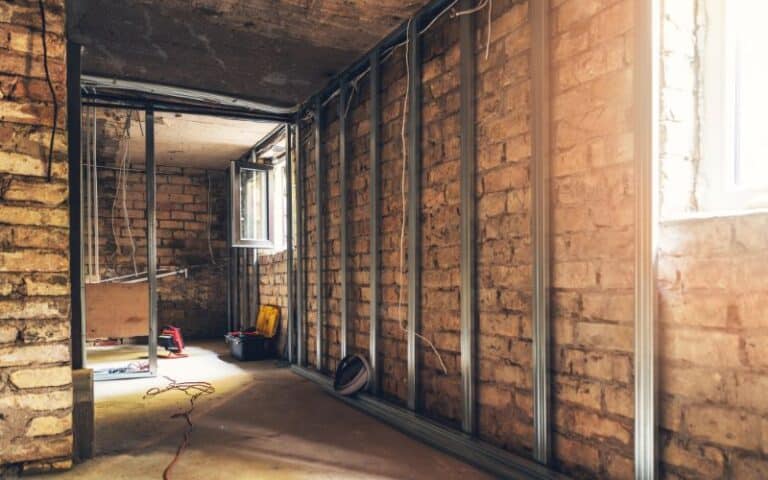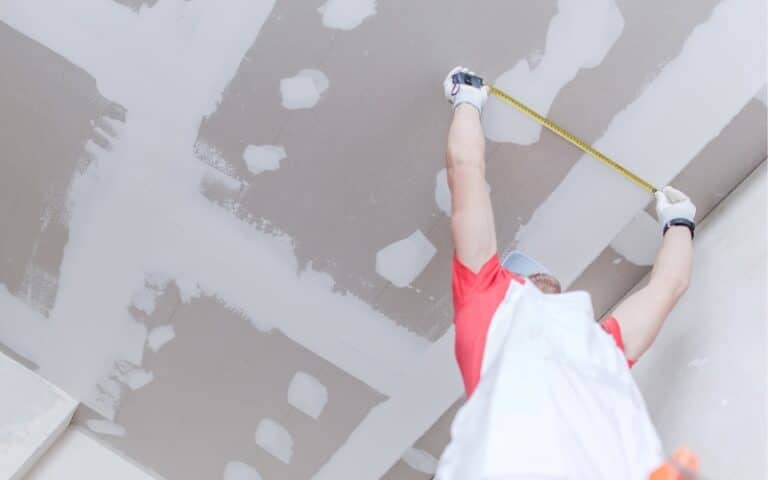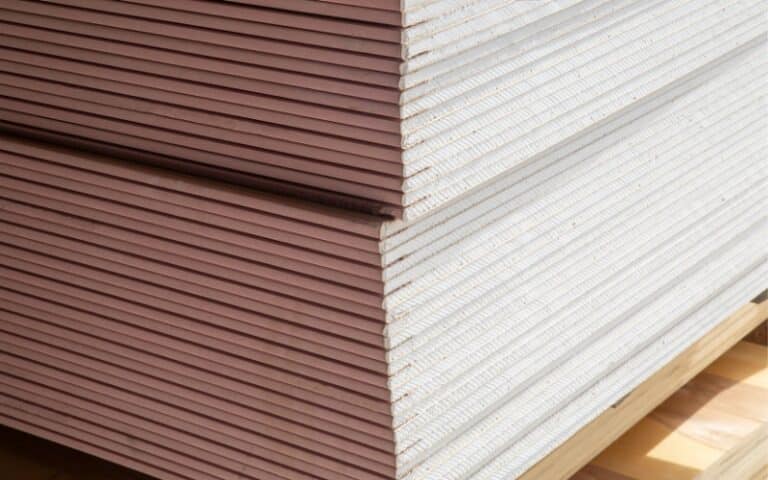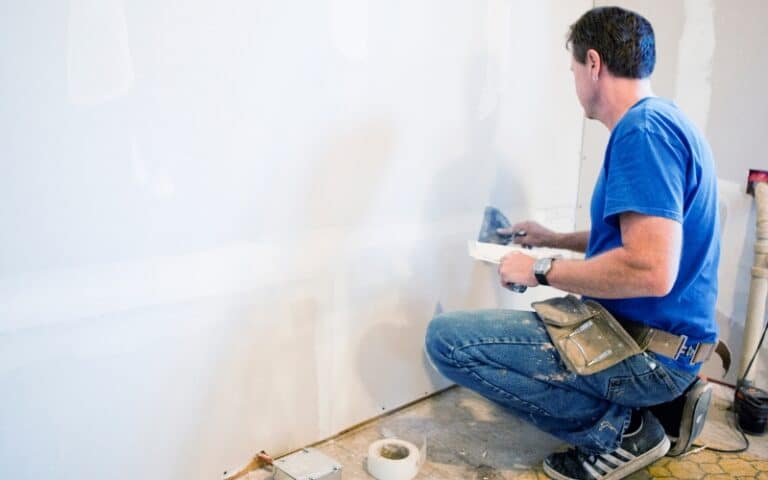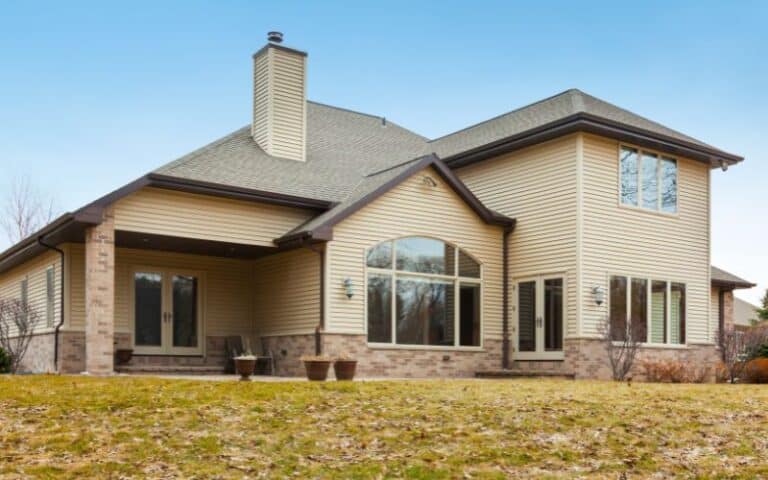Do you need clarification on plywood and drywall? Which would be better to install behind your kitchen cabinets? Would you like to know the pros and cons of using each material?
Both plywood and drywall have their benefits as well as their disadvantages. However, having adequate knowledge of each material can help guide you in making the right choice.
This article provides a thorough and straightforward comparison between both materials when installing them behind kitchen cabinets.
Drywalls are safer compared to plywood for installation within the kitchen. It is because drywalls are fire-resistant. Hence, drywalls offer better protection in the case of a potential or actual fire outbreak. They, however, don’t hold heavy objects and are prone to dampness. Plywood, however, is easier to install and offers better air circulation.
In this article, I will elaborate on the pros and cons of plywood vs. drywall and give detailed comparisons between both materials as it concerns installing behind kitchen cabinets.
I will also discuss the amount of drywall thickness that best installs behind a kitchen cabinet. By the end, you will know which material is the most economical.
Ready for a Drywall Quiz?
Should You Install Drywall or Plywood Behind Kitchen Cabinets?
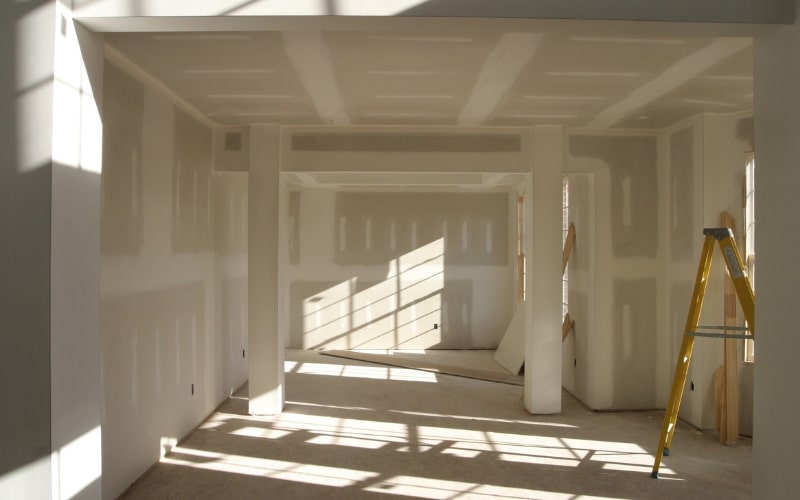
Plywood is more practical for kitchen cabinets as opposed to drywall. Plywood is stronger, lighter, and more durable compared to drywall.
Plywood also provides better air circulation and prevents the kitchen cabinets from getting damp.
It will, in turn, prevent the growth of mold or decay inside the cabinet.
On the other hand, drywall is prone to dampness and can’t support heavy objects hanging on it. It also takes a lot of work to be set up properly.
So even though drywall gives a nice surface finish and is fire-resistant, it usually isn’t worth the hassle or the cost of utilizing them in kitchen cabinets.
Below are some comparative areas where the difference between plywood and drywall in kitchen cabinets is clear.
#1. Fire Resistance
Drywall offers better fire resistance regarding fire outbreaks and fire safety than plywood.
Therefore, it is one of the deciding reasons why most people opt for drywall instead of plywood.
Although, with modern household fire preventive measures, it’s easy to overlook this drywall feature.
But if added fire safety is a major concern, you should install drywall instead of plywood behind your kitchen cabinets.
#2. Ease of Installation
It is easier to install plywood than to install drywall. Drywall is much heavier than plywood, making installing drywall more tedious. Installing drywall is just a part of the process.
There is taping, applying joint compound, and sanding the joints smooth after hanging is complete.
These also take time and are necessary steps in drywall installation. Compared to drywall, plywood doesn’t need taping or application of the joint compound.
#3. Strength of Material
Plywood is stronger than drywall and can hold heavier objects hung on it.
Hanging a heavy object on drywall requires drilling through the drywall, going deeper through the wood studs, and even beyond.
All this is to gain adequate support for the object. Plywood, on the other hand, does not require doing the same.
As a result, you can hang objects on plywood which naturally has more structural strength than drywall.
Because of this, you can mostly find plywood in garages and storage spaces. Plywood is also more durable, unlike drywall, that damages easily.
#4. Finish
Drywall has a higher aesthetic appeal compared to plywood. Plywood has a grainier finish that only fits with some homeowners, especially in certain parts of the house.
On the other hand, drywall provides a smooth surface finish that stands out and is easy to paint.
What Drywall Thickness Is Best to Install Behind Kitchen Cabinets?
It is best to use ½ inch thickness for drywall behind kitchen cabinets. ½ inch-thick drywalls are the most durable and lightest drywall options available.
It can hold heavy objects and can handle major repairs being done on it without damage. It’s also easier to install compared to much thicker drywall options.
The ½-inch-thickness drywall also comes in moisture-resistant and fire-resistant varieties.
If you had to swap between regular plywood and a drywall variety, the ½-inch-thickness drywall would be very suitable.
Here is a table containing a few other drywall thickness ranges and their specifications.
| Thickness | Specifications |
|---|---|
| ¼ inch thick drywall | The thinnest and most economical drywall option. It is lightweight and easy to handle. |
| ⅜ inch thick drywall | Very popular in homes, lightweight, and easy to install. They are also very durable. |
| ⅝ inch thick drywallManufacturers recommend it as the standard drywall thickness for ceilings as it’s durable |
Is Plywood Better Than Drywall for Insulating Kitchen Cabinets?
Yes, plywood is better at insulating kitchen cabinets compared to drywall. That’s because plywood keeps in heat better than drywall and offers better sound insulation.
In fact, on a percentage scale, plywood offers 37% more insulation than drywall. You can, however, install an insulator behind your drywall to boost its insulating properties.
Doing this, however, is an extra cost and may not be worth it if you can afford plywood instead.
Materials suitable for adding insulation to drywall include:
- Expandable Spray Foam
- Fiberglass Batts
- Loose-fill Cellulose
Plywood’s good thermal conductivity and soundproof effectiveness make it a better insulating material than drywall.
However, plywood on its own is not an insulator. Furthermore, using drywall instead of plywood in cases where insulation is a priority will Garner more costs.
That’s because you may need to install an insulator behind the drywall to boost the drywall’s insulating ability.
Plywood or Drywall Behind Kitchen Cabinets; Which Option Is Economical?
Plywood is generally more expensive compared to drywall. However, the cost of the wood panels alone is only one of the things you must consider when judging costs.
You must also consider the price of the finishing materials to be used and the cost of installing the panels.
Regarding installation costs, plywood is generally much more straightforward to work with. Hence, it doesn’t attract a high installation fee.
However, depending on the finish you want, the price will vary. But, in the long run, plywood will serve you better than drywall since it is more durable and stronger than drywall.
However, drywall’s fire-resistant attribute gives it a slight edge over plywood.
Hence, in the advent of a fire outbreak, you will feel much more secure if you have drywall installed behind the kitchen cabinets instead of plywood.
Below is a table that gives brief comparative differences between plywood and drywall.
| Drywall | Plywood |
|---|---|
| Fire resistant | Non-fire resistant |
| Slightly cheaper | More expensive |
| Durable | More durable |
| Nice smooth surface finish | Grainy surface finish |
| Prone to damping | Less prone to damping |
FAQs
Why Would You Use Plywood Instead of Drywall?
Plywood is more robust, durable, and lightweight than drywall. Hence, it is easier to work with. Plywood also requires fewer finishing processes than drywall.
Can You Put Drywall Over Plywood?
Yes, you can put drywall over plywood. Doing this can help strengthen the wall and provide more drywall insulation.
What is a Good Alternative to Drywall?
Good alternatives to drywall include; plywood, medium-density fiberboard (MDF), and oriented strand board (OSB). These options can substitute effectively for drywalls.

